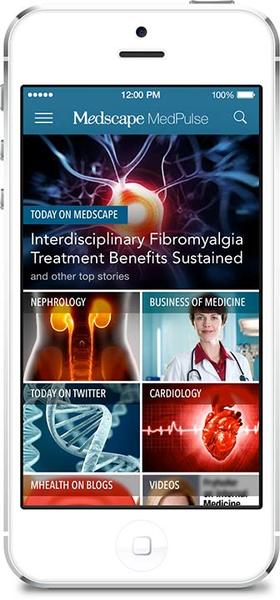 WebMD is increasingly looking to mobile advertising revenue to support its business, according to the company's Q1 earnings call. Because of that, the company released a new app for physicians last week and is working on a major update to its consumer app by the end of Q2. As he has in the past, CEO David Schlanger suggested that those two businesses, consumer and provider, are converging toward a form that might be reminiscent of a personal health record.
WebMD is increasingly looking to mobile advertising revenue to support its business, according to the company's Q1 earnings call. Because of that, the company released a new app for physicians last week and is working on a major update to its consumer app by the end of Q2. As he has in the past, CEO David Schlanger suggested that those two businesses, consumer and provider, are converging toward a form that might be reminiscent of a personal health record.
"Given our position at the intersection of the largest, most engaged communities of consumers and professionals, we are continuing to invest in 2014 to position WebMD as a central place where consumers can go to manage all their health information and relationships and share that information with their various health providers in a private and secure manner," Schlanger said on the call.
He later added, "We expect to introduce services later this year that include the ability to manage health information in one place including medical records, lab results, biometric device data, claims information, and other third party data. [We will then be in a position to] link consumers and providers across the healthcare industry, including physicians, hospitals, labs and pharmacies, allowing them to communicate in a secure environment and collaborate on managing patient care."
These future products, he clarified during the Q&A, will be an outgrowth of WebMD's Avado acquisition last year, and will not be dependent on any further acquisitions.
The new provider app, Medscape MedPulse, is a news reader app designed to give physicians quick and easy access to the latest medical news. It includes original content from Medscape including business, legal, and ethical news and commentary, as well as breaking drug and device news from the FDA along with the latest notable clinical trials. Doctors can personalize the content delivered to them by specialty. Schlanger especially highlighted the app's curated Twitter feed, a feature he described as "first in class."
"Healthcare professionals are faced with a multitude of news aggregators and social media platforms and have limited time to find those most important to them," he said. "MedPulse filters out the noise and focuses on the most pertinent information healthcare professionals need to know."
On the consumer side, Schlanger discussed an upcoming feature for a revamped version of WebMD's flagship mobile app. The feature, called Healthy Targets, will be aimed at helping patients, especially those with diabetes, manage their weight. It will connect the app to the user's glucometers, connected weight scales, and other wearable sensors.
"The app will utilize this data to provide personalized content and tips and measure progress within a comprehensive health improvement program," said Schlanger. "We see an opportunity to make biometric data understandable and actionable for consumers interested in creating and sustaining healthy habits as they look to lead healthier lifestyle."
The company shared positive financial and traffic outcomes on the call, saying that earnings in total increased 19 percent year-over-year, an adjusted EBITDA increase of 56 percent. The WebMD network, including mobile and websites, received an average of 174 million unique users per month, an increase of 32 percent, and a total of 3.5 billion page views for the quarter, an increase of 26 percent.
Schlanger said about 30 percent of that traffic came from a personal computer in the United States, 34 percent came from a US smartphone, 9 percent from a US tablet, and 27 percent from devices outside the United States. The only device that saw traffic fall was the tablet, but Schlanger said the company considers the tablet and PC views in one category, and that category grew overall.
"Our traffic growth is being driven primarily by increased utilization of our mobile offerings," Schlanger said. "However ... our mobile growth has not been at the expense of our desktop traffic."
















